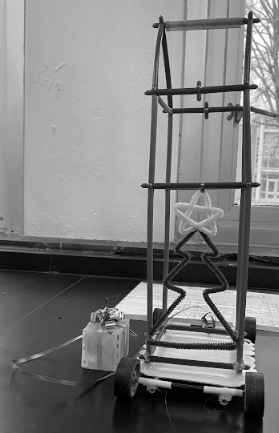Invisibility cloak bends light to avoid detection
To all the Harry Potter fanatics out there, your biggest dream may be coming true; an invisibility cloak is in the works. However, it may take some time before the average human can throw it over his shoulders and escape to Hogsmeade.
“It is the science fiction technology that sounded so far away,” said science teacher, Douglass Heeter.
While the “cloak” is still visible to the naked eye, researchers at The Department of Electrical and Computer Engineering (DECE) at the University of Toronto (UoT), Professor George Eleftheriades and PhD student Michael Selvanayagam have created a thin cloak of antennas that are small, and adaptive to various objects.
“It is like a 1,000 sequins built into a suit that would reflect what is behind it to give it an appearance of disappearing,” said tech teacher, Mark Campbell.
The scientific name for this device is AEMC, Active Electromagnetic Cloak. AEMC can cancel the scattered fields created by an object when it is wrapped in the antennas that radiate an electromagnetic field away from an object. The radio waves that would normally bounce back to the radar detector, go around the object.
“This is just amazing technology that could really benefit our military,” said Heeter.
The cloaking technology could do more than just remove objects from radar; they could eliminate objects, such as structures interrupting signals from cellular base stations that could be cloaked to allow signals to pass by freely.
While scientists have succeeded in creating an object invisible to radar detection they are still in the process of making a cloak invisible to the naked eye. Seven years ago they could conclude that the technology can bend microwaves around a copper cylinder which allowed it to disappear.
In 2012 a company called Hyperstealth reported the creation of SmartCamo, a product that makes the wearer invisible by matching the surroundings. SmartCamo only works if the wearer stays in one place for a long period of time to avoid detection.
“They need to make this technology sustainable in all conditions,” said Campbell.
Dr. David Smith and his team at Duke University have been working on a cameo that could make soldiers undetectable. Zillions of microscopic mirrors are still not small enough to reflect visible light but it can reflect microwaves.
“What concerns me is the possibility of this technology being very fragile, it would not be very good if it just gave out in the middle of a mission,” said Campbell.
According to Smith’s research, the mirrors are made out of a copper circuit board that is coated in a light sensitive that is used in photography. The finished material is called a metamaterial which is then cut into thousands of reflective pieces that are 250 microns wide, about three widths of a human hair.
“In layman’s terms it is just the refraction and diffraction of light waves,” said Heeter.
It is then wrapped around the object so the light continues uninterrupted by it and it seems that it can be seen right through. Smith believes that this device is less than a decade away from being at full use.
“It is more relative to the military, but it could also benefit Homeland Security once it is released,” said Heeter.






